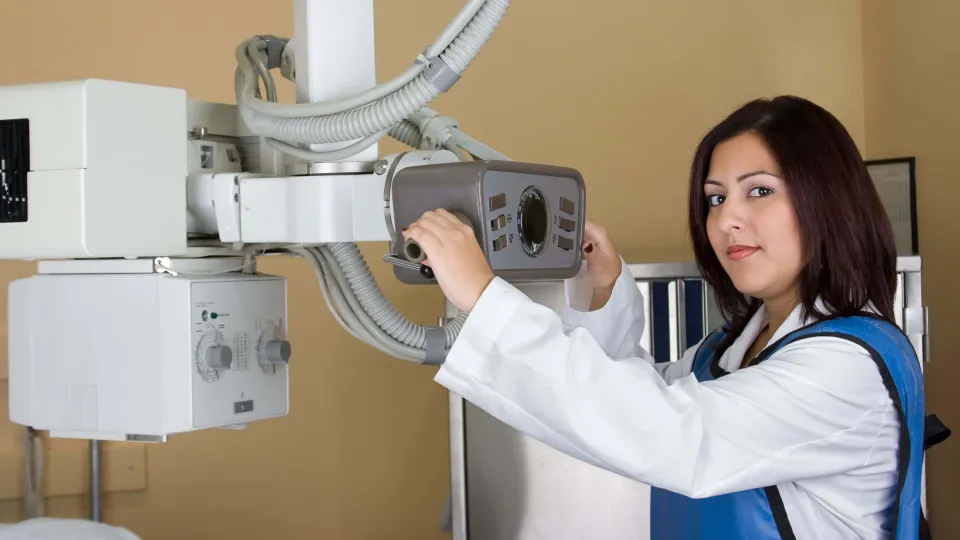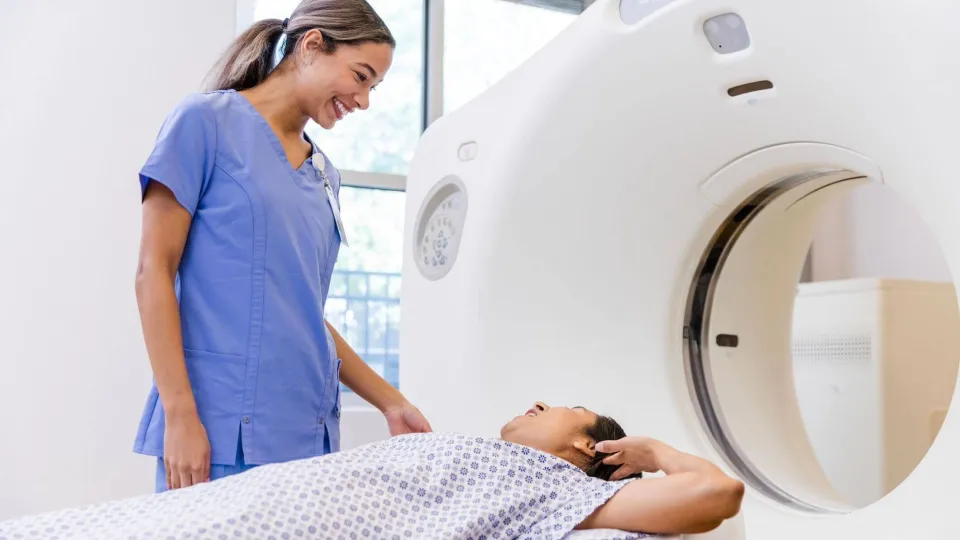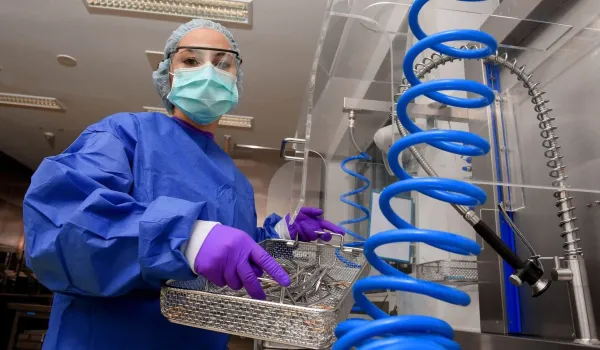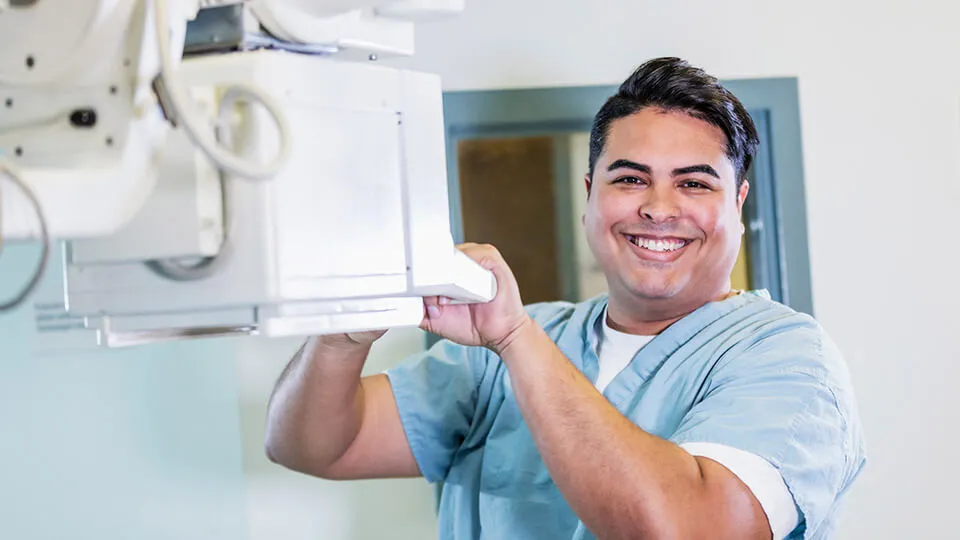
If a career in the medical industry with many specializations interests you, consider becoming a radiologic technologist. These professionals have several hands-on responsibilities within a health care facility, and understanding what the job entails can help you decide whether it aligns with your career goals. Use this guide to learn about the profession, including a day in the life of a radiologic technologist, where they work, and how to become one.
What Is a Radiologic Technologist?
Radiologic technologists are medical professionals who specialize in human anatomy imaging. They conduct various imaging examinations to diagnose, treat, or rule out disease or injury.
Types of Imaging and Radiologic Technologist Specialties
Radiologic technologists perform a variety of imaging procedures, each of which is a specialty that you could enter. These include:
- X-ray: X-ray uses high-energy beams that pass through soft tissue but not bone, so it's the imaging mode of choice for diagnosing bone injuries.
- Mammography: Mammography is a variety of X-ray imaging of the breasts. It's commonly used to detect breast cancer.
- Computed tomography: A CT scan takes a series of X-rays from multiple angles, which computer software uses to create cross-sectional images. It's useful for imaging soft and hard tissues.
- Magnetic resonance imaging: MRI scans the body with a powerful magnet that's capable of generating detailed images. It's normally used for diagnosing soft-tissue abnormalities, including cysts and tumors.
- Ultrasound: Also known as sonography, ultrasound uses high-frequency sound waves to image the interior of the body. Some common uses of ultrasound include examining lumps, monitoring the progress of a fetus during pregnancy, and guiding needles for biopsies.
- Nuclear medicine imaging: Nuclear medicine imaging administers radioactive tracer material and detects radiation from various parts of the body. It is useful for diagnosing disorders of the heart, thyroid, gallbladder, kidneys, lungs, bones, and blood.
- Bone densitometry: Bone densitometry assesses bone mineral content and density through X-rays, dual-energy X-ray absorptiometry, or a specialized CT scan. It is beneficial for diagnosing conditions such as osteopenia and osteoporosis.
- Fluoroscopy: Fluoroscopy is a continuous X-ray image, which can be useful for diagnosing diseases of the heart or intestines and for guiding implants, injections, and surgeries.
Advanced Roles for Radiologic Technologists
After gaining sufficient experience or specializing in a particular radiographic field, a radiologic technologist may advance to managerial or supervisory roles. With three to five years of experience or more, depending on the location and size of the healthcare facility, you might qualify for the role of chief radiologic technologist. This role entails coordinating the activities of the radiology department.
The Importance of Radiologic Technologists in Health Care
Radiologic technologists have a fundamental role in patient care. By operating imaging equipment, they allow other members of the care team to visualize the inner workings of patients. The X-rays, scans, and other images they produce provide key diagnostic information that would be otherwise unattainable without surgical intervention. Their work helps to minimize invasive procedures and leads to better patient outcomes.
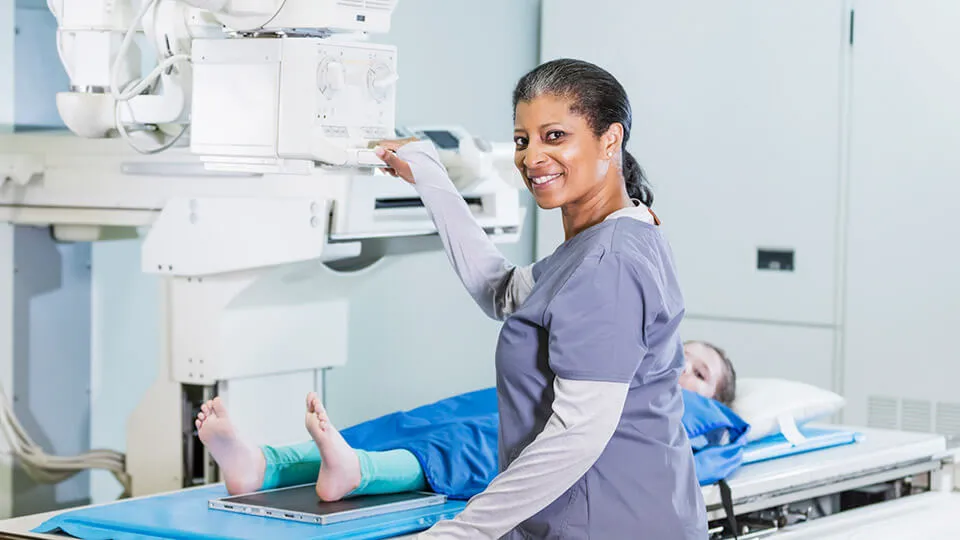
Radiologic Technologist Education Requirements
An associate degree in radiography is the most common qualification for radiologic technologists. This program usually takes two years to complete, which includes general education courses and covers areas such as:
- Patient positioning.
- Anatomy.
- Pathology.
- Image evaluation.
- Medical ethics.
- Examination techniques and procedures.
- Equipment protocols.
- Radiation physics, protection, and patient safety.
- Basic patient care.
- Health science terminology.
Licensure and Certification
Most states also require radiologic technologists to hold a professional license or certification. These states administer certification examinations through the American Registry of Radiologic Technologists, which also offers assessments in nuclear medicine technology, radiation therapy, and fluoroscopy.
What Does a Radiologic Technologist Do Every Day?
While radiologic technologists share the same general tasks, their duties may vary depending on their workplace, experience level, shift, and patient needs. For example, a radiology technologist's duties may be different if they work in a hospital compared with an outpatient clinic, as the latter tends to have a more stabilized patient count and no trauma units. Here's a look at the day in the life of a radiology technologist and their various duties:
- Receive instructions from doctors: Before radiologic technologists start imaging, they receive instructions from a medical professional regarding the part of a patient's body that requires imaging.
- Ensure all equipment is operational: Prior to the procedure, radiologic technologists verify that the machine they're using is in working order and capable of taking clear and accurate images. If it isn't, they need to notify the right party and obtain equipment that can take images correctly.
- Prepare patients for imaging: Radiologic technologists introduce themselves to their patients and provide them with clean medical gowns. They then position the equipment or the patient to obtain the image. Technologists may also need to lift less mobile patients to obtain a photograph of the affected area.
- Operate imaging equipment: With the patient in the proper position, radiologic technologists use the equipment to obtain an accurate image of the necessary areas. During this process, they follow proper safety protocols and wear protective clothing, such as shielding devices, to prevent them from radiation exposure and other harmful energy that diagnostic technology emits.
- Review images: Following the procedure, technologists review the images to ensure they're clear enough for a physician or other medical professional diagnosis. If an image isn't accurate, radiologic technologists take additional photographs.
- Print or develop images: If the images taken are accurate and clear, radiologic technologists print or develop them through a computer printing process. They then label each image and add them to the patient's medical records. If a physician needs additional angles to assist their diagnosis, they may ask the radiologic technologist to take more photographs.
- Clean used equipment: Technologists clean any equipment that they used during the procedure. This includes imaging equipment and anything the patient may have used, such as a table. They may discard the patient's gown or store it in a laundry container.
- Meet with other patients: Radiologic technologists may assist several patients throughout their day while working alongside other members of the health care staff.
- Perform other duties: In addition to their patient-related duties, radiologic technologists may help with administrative tasks, such as completing the necessary paperwork, restocking supplies, and meeting with other health care professionals.
Radiologic Technologist Skills
Several skills may benefit radiologic technologists. Some notable abilities include the following:
- Interpersonal skills: While radiologic technologists spend much of their day using advanced radiography equipment, they also interact with patients and other health care professionals. When patients share their stories or personal information, it helps to have strong interpersonal skills to empathize and offer support.
- Patience: Technologists display patience when helping their patients and while operating radiologic equipment. It may be tempting to produce images quickly, but taking your time on the first try allows you to capture a quality image without having to repeat the process.
- Physical strength: Radiologic technologists require stamina, as they spend most of their day walking and standing. Additionally, they need strength to move heavy equipment or assist less mobile patients.
- Communication skills: Technologists have strong communication skills to converse with other members of a medical team, their patients, and physicians and to accurately record their patients' details.
- Mathematical and scientific skills: With a combination of mathematical and scientific skills, radiologic technologists can operate a variety of diagnostic equipment for patients.
- Medical skills: Radiologic technologists need to have a solid medical background. This includes knowledge of CPR and how to check vital signs. Additionally, technologists have a good understanding of human anatomy and physiology.
- Attention to detail: They use their attention to detail to capture the correct images for physicians. This skill helps them to accurately obtain an image without having to repeat the process.
- Medical safety skills: As with other medical professions, radiologic technologists need to be mindful of their surroundings and follow proper safety protocols and procedures.
Radiologic Technologist Work Environment
Most radiologic technologists work in private, state, or local hospitals. They may also work in private imaging centers, outpatient care centers, laboratories, doctors' offices, and therapy centers. In these settings, they work alongside radiologists, doctors, and other health care professionals.
Most radiologic technologists work full time for about 40 hours per week, but some may work shifts or part time. Depending on their schedule, they may also have weekend, evening, or on-call shifts. Their specific work hours may vary depending on their place of employment.
How To Become a Radiologic Technologist
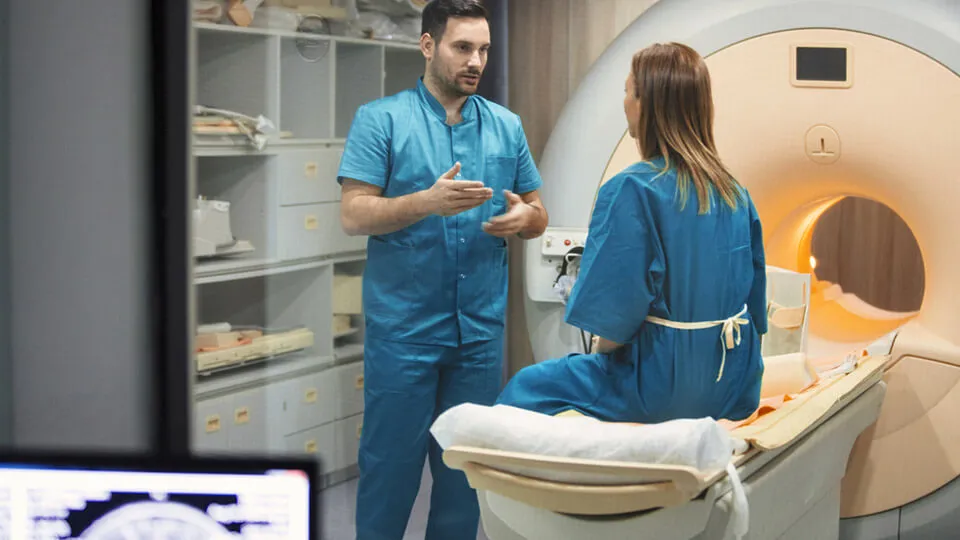
Where Can You Work as a Radiology Tech?
While not every aspiring radiologic technologist follows the same route, here are some general steps you may consider to help you achieve your career goals:
1. Focus on your coursework during high school
To prepare for higher education, enroll in courses related to mathematics and science. Subjects to consider include anatomy, biology, chemistry, and physics. During breaks from high school, you might also consider interning at a health care facility to give you a greater understanding of a radiologic technologist's job.
2. Earn an associate degree
To pursue a career as a radiologic technologist, you need a minimum of an associate degree to obtain certification. While you can pursue a bachelor's degree, most aspiring technologists opt for the two-year associate degree program. This program covers anatomy, equipment operation, radiographic procedures, image production, radiology procedures, patient care, and physiology.
Ensure you enroll in an accredited program as required for licensure. Concorde offers a radiologic technology program that's accredited by the Joint Review Committee on Education in Radiologic Technology(1). This associate degree program provides you with the opportunity to learn the technical skills required to succeed in the profession.
3. Apply for certification
While there aren't any national licensing requirements to pursue a career in this field, some states have their own licensing protocols. To increase your chances of employment, consider earning your certification as a radiologic technologist.
Typically, you need to provide documentation of your academic record, fill out an application, and pass an examination that verifies your entry-level knowledge in this field. The examination includes your knowledge of machinery operation, image production, and general radiology procedures. The American Registry of Radiologic Technologists (2) or your state administers this test. Contact your state's health board to learn about local requirements.
While a radiography certification is sufficient for entry-level radiologic technologist positions, you can also choose a specialized certification as you advance in your field. Some specialties include bone densitometry, nuclear medicine technology, sonography, cellular imaging, medical imaging, radiography, breast sonography, cardiac-interventional radiography, quality management, and mammography.
4. Maintain your certification
Once you've obtained your certification, you need to maintain it to continue working in this role. To do this, you typically need to follow continuing education requirements every two years. You also need to abide by continuing qualification requirements every 10 years to help you stay up to date with the latest technology and radiology advancements.
If pursuing a career as a radiologic technologist interests you, consider enrolling in our radiologic technology associate degree program. Concorde can provide you with the opportunity to achieve your career goals and advance within this health care field. We also offer other training programs related to patient care. For more information about any of our programs, contact us today.
Interested In How To Become a Radiology Tech?
Click here to explore Radiology Tech Programs near you!
Footnotes
1. Joint Review Committee on Education in Radiologic Technology, https://www.jrcert.org/
2. The American Registry of Radiologic Technologists, https://www.arrt.org/
Take The Next Step Towards a Brighter Future
Interested in learning more about our Radiologic Technology program?
We have a Concorde representative ready to talk about what matters most to you. Get answers about start dates, curriculum, financial aid, scholarships and more!

